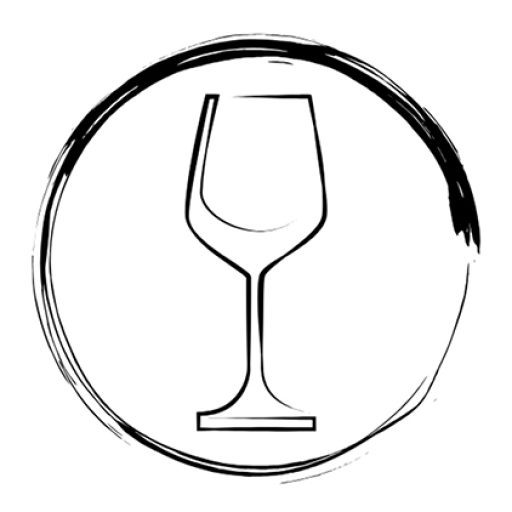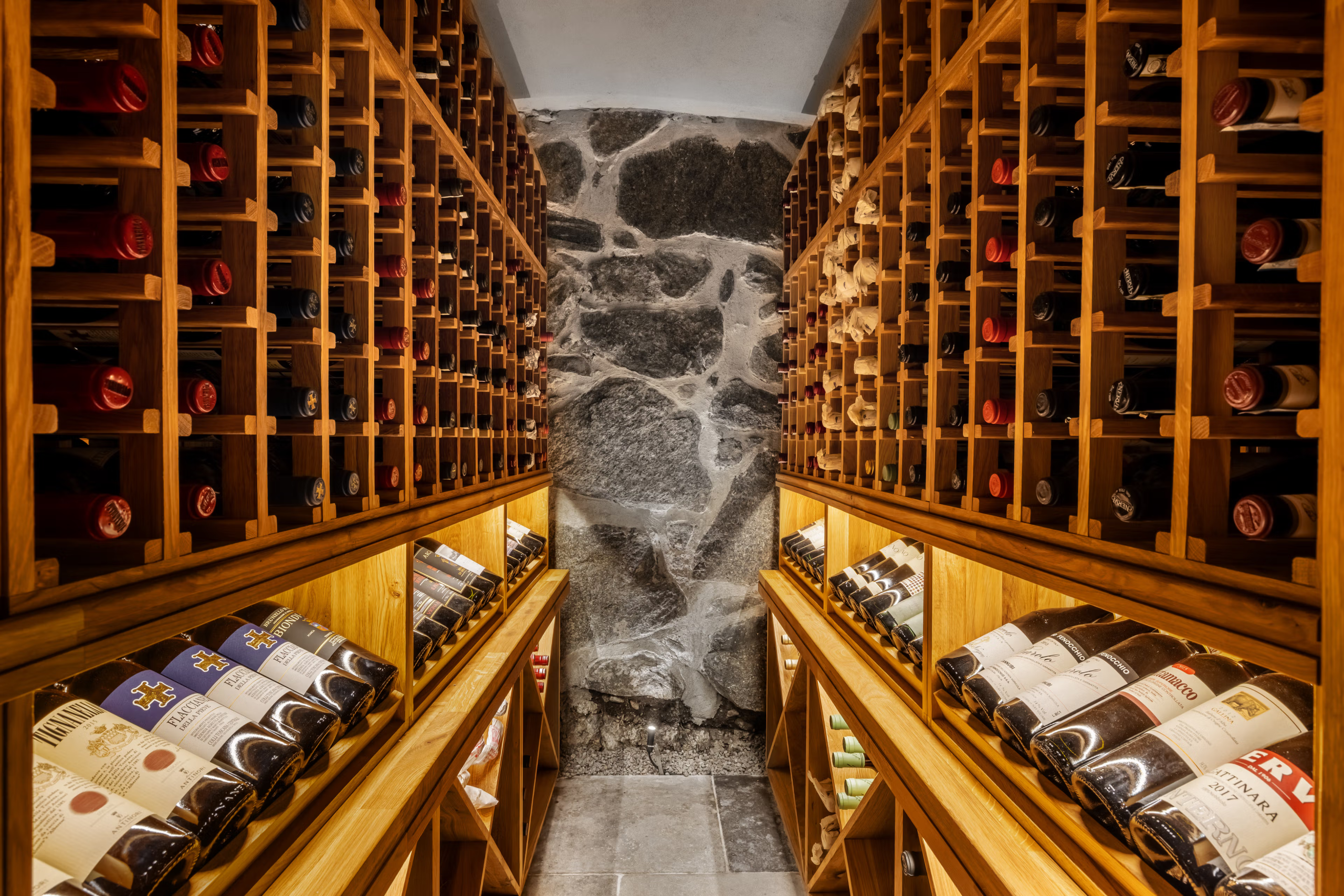Mastering Proper Wine Storage Techniques at Home
Wine Preservation home wine storage, proper wine storage techniques, wine aging, wine cellar conditions, wine humidity, wine refrigerator, wine temperature controlWine appreciation extends beyond the moment of tasting—it encompasses the entire journey from vineyard to glass, with proper storage representing a critical link in this chain. Whether you’re building a modest collection or simply want to preserve a few special bottles, understanding and implementing proper wine storage techniques can significantly enhance your enjoyment while protecting your investment. This guide explores the essential principles of home wine storage, offering practical solutions for collectors at every level of commitment and budget.
Understanding Why Wine Storage Matters
Wine is a living substance that continues to evolve in the bottle, with chemical reactions gradually transforming flavors, aromas, and textures. Proper storage creates the optimal environment for these changes to occur beneficially, while poor conditions can irreparably damage even the finest wines.
The Chemistry of Wine Aging
Several key chemical processes occur during bottle aging:
- Tannins gradually polymerize, becoming less harsh and more integrated
- Fruit compounds evolve from primary flavors to more complex secondary and tertiary notes
- Acids and alcohols form esters, creating new aromatic compounds
- Trace oxygen exposure through cork allows for slow oxidation
These natural processes require stability and specific environmental conditions to progress favorably. When properly aged, wines develop enhanced complexity, integration, and harmony impossible to achieve otherwise.
The Cost of Improper Storage
Wine that suffers from poor storage conditions experiences accelerated and often detrimental changes:
- Excessive heat speeds chemical reactions, causing “cooked” flavors
- Temperature fluctuations expand and contract wine, potentially pushing cork outward
- Bright light triggers reactions that create unpleasant aromas
- Insufficient humidity dries corks, allowing damaging oxygen ingress
- Vibration disturbs sediment and may disrupt aging processes
Even expensive, age-worthy wines can be rendered mediocre or undrinkable through improper storage—a costly disappointment particularly distressing when discovered upon opening a special bottle.
The Essential Factors of Proper Wine Storage
Six fundamental factors determine storage quality, with temperature being the most critical. Understanding these elements helps create optimal conditions for your wine collection.
Temperature: The Primary Concern
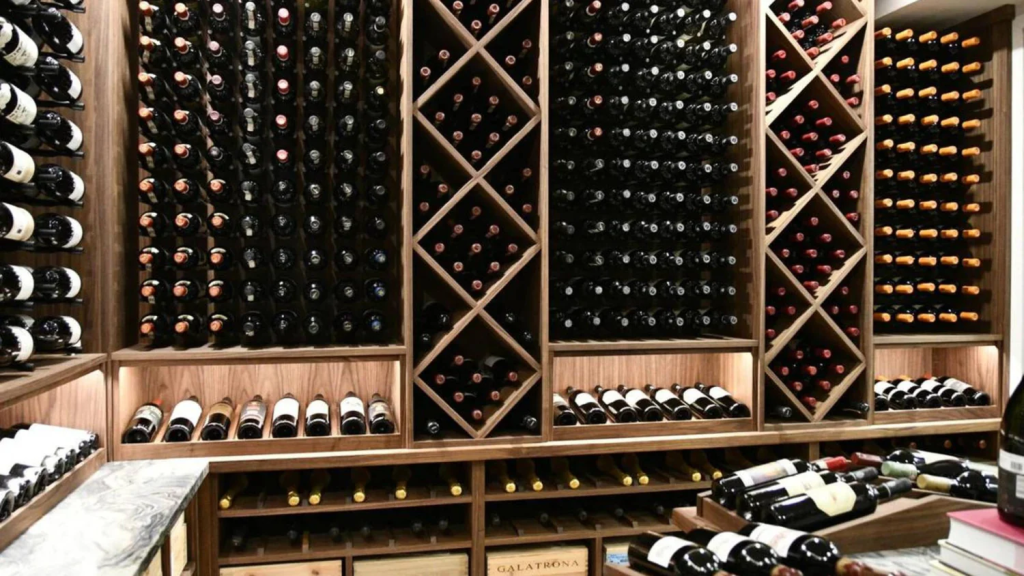
Temperature represents the most crucial storage factor, affecting chemical reactions and long-term development:
Ideal Storage Temperature:
- Optimal range: 52-57°F (11-14°C) for all wine types
- Acceptable range: 45-65°F (7-18°C) with minimal fluctuation
- Critical concerns: consistent temperature more important than precise value
Temperature Stability:
- Daily fluctuation should remain under 3°F (1.5°C)
- Seasonal variation ideally under 5°F (2.5°C)
- Rapid temperature changes particularly harmful
Temperature Danger Zones:
- Above 70°F (21°C): accelerated aging, potential for “cooked” flavors
- Above 80°F (27°C): rapid deterioration possible within weeks
- Below freezing: expansion may push corks or even break bottles
Wine refrigeration units or climate-controlled cellars represent the most reliable solution for temperature management, though creative alternatives exist for smaller collections or transitional storage.
Humidity: Cork Protection
Proper humidity maintains cork integrity, which is essential for the tiny amount of controlled oxygen exchange that benefits aging while preventing excessive oxidation:
Ideal Humidity Levels:
- Optimal range: 60-70% relative humidity
- Acceptable range: 50-80% relative humidity
- Below 50%: risk of dried corks and increased oxidation
- Above 80%: potential for mold growth on labels and corks
Practical Humidity Solutions:
- Wine refrigerators with humidity control
- Small humidifiers in enclosed storage areas
- Trays of water in wine refrigerators lacking humidity control
- Storing bottles horizontally to keep cork in contact with wine
Proper humidity balance protects both the wine itself and collectable labels, which can deteriorate in conditions that are either too dry or too damp.
Light Exposure: Preventing Damage
Light—particularly ultraviolet radiation—triggers photochemical reactions that create undesirable aromas often described as “light struck”:
Light Protection Principles:
- Store wine in complete darkness when possible
- Minimize exposure to artificial lighting, especially fluorescent bulbs
- UV-filtering glass provides some protection for display areas
- Colored glass bottles (green, amber) offer partial light protection
Practical Light Considerations:
- Solid doors on wine refrigerators preferable to glass
- If using glass doors, ensure they have UV protection
- Never store wine in areas with direct sunlight, even briefly
- For wines in clear bottles, extra light protection is essential
Light damage occurs cumulatively and is irreversible, making prevention particularly important for wines intended for extended aging.
Vibration: Maintaining Peace
While less critical than temperature, excessive vibration can negatively impact wine development:
Vibration Concerns:
- Disturbs sediment in aged wines
- Potentially accelerates unwanted chemical reactions
- May disrupt the gradual integration of components
Vibration Reduction Techniques:
- Avoid placing wine storage near appliances, speakers, or HVAC equipment
- Select wine refrigerators with vibration-dampening technology
- Install wine racks away from high-traffic areas
- Handle bottles minimally once placed in storage
Long-term, subtle vibration appears more detrimental than occasional gentle movement, though research continues on its precise effects.
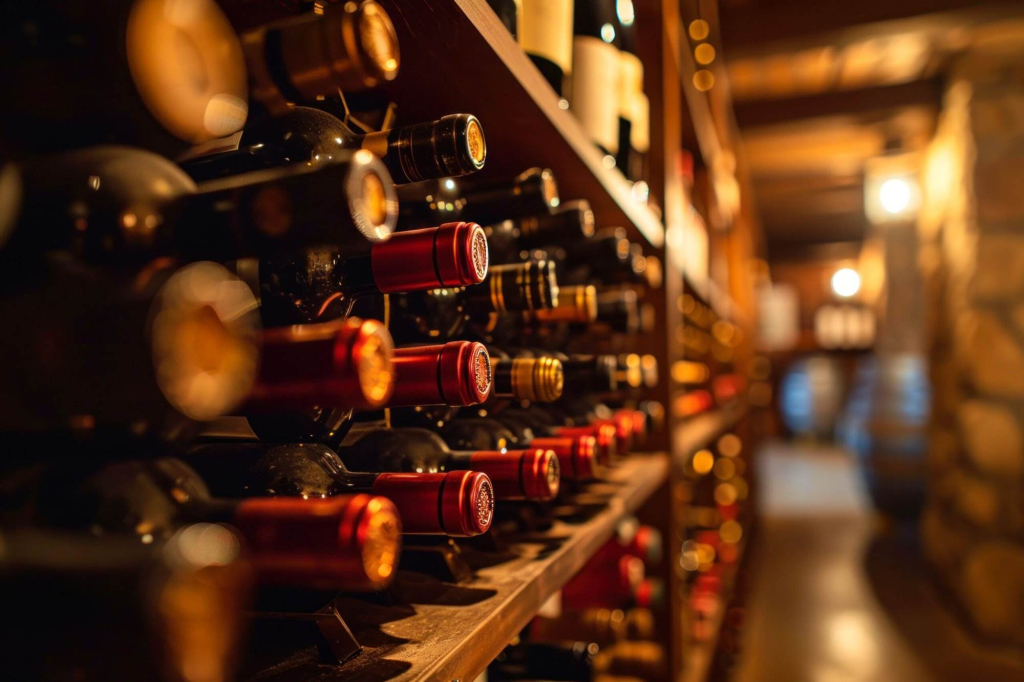
Bottle Orientation: The Horizontal Advantage
Proper bottle positioning maintains cork moisture and has implications for sediment development:
Orientation Guidelines:
- Store cork-sealed wines horizontally to keep cork moist
- Store screw-cap wines in any orientation (horizontal saves space)
- Champagne and sparkling wines can be stored horizontally safely
- Consider slight angle for aged reds to collect sediment in shoulder
Exceptions to Horizontal Storage:
- Very short-term storage (under 1 month)
- Spirits and fortified wines with higher alcohol content
- Bottles intended for immediate consumption
Specialized wine racks, refrigerators, and cellar systems typically accommodate horizontal storage, maximizing space efficiency while maintaining proper cork conditioning.
Odors and Ventilation: Protecting Bouquet
Wine “breathes” minutely through the cork, making ambient air quality important:
Odor Considerations:
- Avoid storing wine near strong-smelling items (paint, chemicals, food)
- Ensure storage areas have minimal cooking odor exposure
- Be cautious with wooden storage that may impart cedar or pine aromas
- Consider activated charcoal filters in enclosed storage areas
Ventilation Requirements:
- Some air circulation prevents mustiness and mold
- Excessive airflow can dry corks and introduce contaminants
- Balanced approach: gentle air movement without drafts
While less recognized than temperature and humidity, air quality represents an important consideration for maintaining wine purity, particularly for extended aging.
Storage Solutions for Different Collection Sizes
Various storage approaches offer different combinations of ideal conditions, convenience, and cost. Matching the solution to your collection size and aging intentions ensures the best value and results.
Temporary Storage for Everyday Wines
For bottles intended for consumption within months rather than years, simplified storage suffices:
Practical Short-Term Solutions:
- Cool, dark closet away from external walls and heat sources
- Under-bed storage boxes specifically designed for wine
- Wine rack placed in consistently cool room location
- Insulated wine totes for very short-term temperature stability
Key Considerations:
- Maintain temperature under 70°F (21°C) consistently
- Avoid locations with significant daily temperature swings
- Keep bottles away from direct light sources
- Position cork-sealed bottles horizontally if storing over a month
These approaches work well for everyday drinking wines not intended for aging, representing minimal investment while providing adequate protection.
Medium Collection Storage Options
Collections of 20-100 bottles benefit from more structured approaches while remaining feasible in most homes:
Wine Refrigeration Units:
- Freestanding wine refrigerators (20-50 bottles)
- Built-in under-counter units for kitchen integration
- Dual-zone units for separate red and white storage temperatures
- Features to consider: UV-protected doors, vibration reduction, humidity control
Converted Spaces:
- Basement closet with insulation and cooling if needed
- Repurposed cabinetry with cooling unit installation
- North-facing closet in consistently cool part of home
- Under-stair storage areas with insulation modifications
These solutions balance proper storage conditions with reasonable cost and space requirements, suitable for collections intended for medium-term aging (1-5 years).
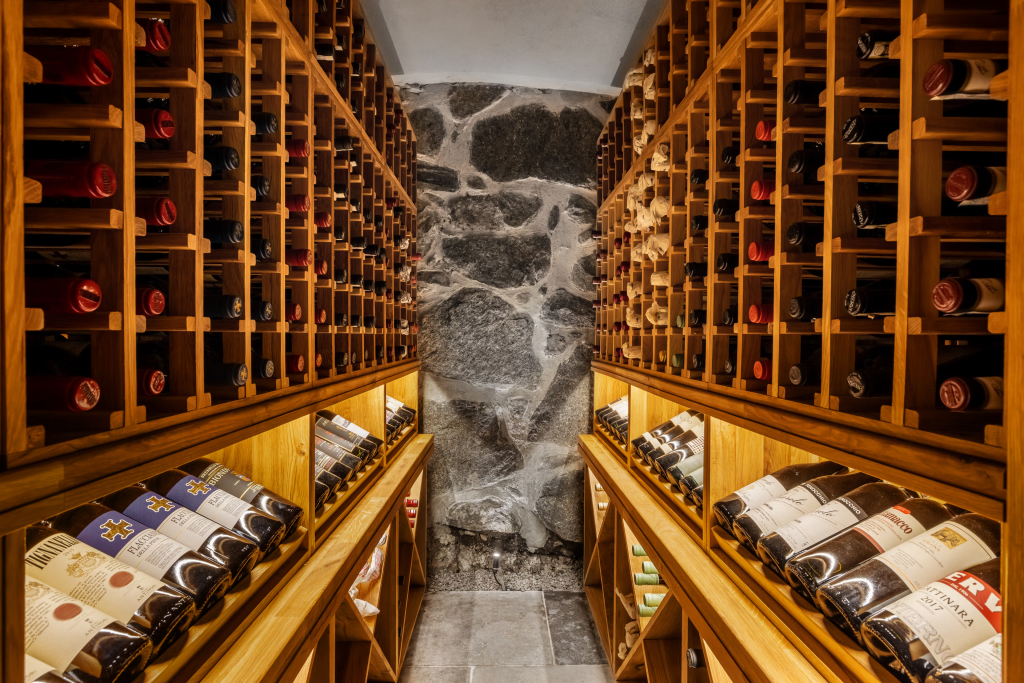
Dedicated Cellar Solutions for Serious Collectors
Large collections or valuable wines benefit from purpose-built storage environments:
Passive Cellar Options:
- Below-ground basement areas naturally maintaining stable conditions
- Converted root cellars with humidity and ventilation control
- Earth-sheltered spaces with natural temperature stability
- Insulated interior rooms in consistently cool climates
Active Cellar Systems:
- Purpose-built refrigerated rooms with dedicated cooling systems
- Modular cellar systems combining storage and climate control
- Specialty wine cellar conditioning units maintaining temperature and humidity
- Professional cellar design addressing all environmental factors simultaneously
Off-Site Storage Alternatives:
- Professional wine storage facilities with perfect conditions
- Wine storage lockers in temperature-controlled environments
- Shared cellar arrangements with other collectors
- Commercial wine storage services with inventory management
These comprehensive approaches provide optimal conditions for significant collections or valuable wines intended for long-term aging, representing more substantial investments in both equipment and space.
Practical Tips for Wine Storage Implementation
Beyond understanding the principles and selecting appropriate storage solutions, several practical considerations help maximize storage effectiveness.
Monitoring Systems
Tracking storage conditions provides peace of mind and early warning of potential problems:
Monitoring Options:
- Basic thermometer/hygrometer combinations for temperature and humidity
- Wireless monitoring systems with smartphone alerts for condition changes
- Data-logging devices tracking conditions over time
- Integrated systems in high-end wine refrigeration units
Even simple monitoring prevents unpleasant surprises and allows corrective action before wine damage occurs.
Inventory Management
Organized inventory tracking prevents forgotten bottles and helps manage drinking windows:
Inventory Systems:
- Simple spreadsheets noting purchase information and drinking windows
- Wine cellar apps with bottle scanning and maturity tracking
- Location coding systems for larger collections
- Professional cellar management software for serious collectors
Effective inventory systems ensure wines are enjoyed at their peak rather than discovered past their prime.
Seasonal Considerations
Different seasons present unique storage challenges requiring specific approaches:
Summer Challenges:
- Increased risk of heat exposure during transport and delivery
- Higher humidity levels in passive storage areas
- Greater electricity demands on cooling systems
- More dramatic day/night temperature variations
Winter Considerations:
- Extremely low humidity in heated environments
- Risk of freezing during transport in cold climates
- Condensation issues when moving bottles between temperature zones
- Heating system proximity affecting storage temperatures
Awareness of seasonal variations allows proactive adjustments to maintain ideal conditions year-round.
Special Storage Considerations
Certain wine types require specific storage approaches or present unique considerations worth understanding.
Champagne and Sparkling Wine
Effervescent wines benefit from tailored storage approaches:
Sparkling Wine Considerations:
- Generally best stored slightly cooler (around 50°F/10°C)
- Pressure within bottles makes them more resistant to minor humidity variations
- Safe to store horizontally despite myths about carbonation effects
- Often more sensitive to light exposure, particularly prestige cuvées
While sparkling wines follow most general storage principles, their unique characteristics inform slight modifications to standard practices.
Aged Reds and Sediment Management
Fine red wines naturally develop sediment during aging, requiring thoughtful handling:
Sediment Considerations:
- Store bottles that will develop sediment consistently without disturbance
- Position bottles with slight upward tilt to collect sediment in shoulder
- Allow adequate settling time (24-72 hours) before opening aged bottles
- Consider decanting techniques appropriate for sediment separation
Proper sediment management preserves the clarity and texture advantages gained through careful long-term storage.
Dessert and Fortified Wines
Higher alcohol and sugar content creates different storage dynamics:
Modified Requirements:
- Generally more resilient to storage variations due to higher alcohol
- Vertical storage acceptable for longer periods due to reduced cork drying
- May benefit from slightly cooler storage temperatures
- Often capable of extremely long aging with proper conditions
These robust wines forgive minor storage lapses but still benefit substantially from proper aging environments when intended for extended cellaring.
Troubleshooting Common Storage Problems
Even with careful planning, storage challenges may arise. Recognizing and addressing these issues promptly minimizes potential damage.
Signs of Heat Damage
Heat-damaged wines exhibit several recognizable characteristics:
Heat Damage Indicators:
- Pushed-up corks or visible wine seepage around cork
- Unusually deep color for the wine’s age
- Stewed fruit or jammy aromas lacking freshness
- Flattened flavors with reduced fruit expression
- Premature browning or brick-red coloration in red wines
While minor heat exposure may simply accelerate aging, significant or prolonged heat irreparably damages wine quality.
Addressing Humidity Extremes
Both excessive and insufficient humidity create problems requiring intervention:
Low Humidity Solutions:
- Small humidifiers in enclosed storage spaces
- Open containers of water to increase ambient humidity
- Wet towels in wine refrigerators lacking humidity control
- Consider professional-grade humidity systems for valuable collections
High Humidity Remedies:
- Silica-based dehumidification products
- Electric dehumidifiers for enclosed spaces
- Improved ventilation in naturally damp storage areas
- Store wine labels facing upward to minimize moisture contact
Correcting humidity imbalances before cork integrity becomes compromised prevents the more serious issue of excessive oxygen exposure.
Recommended Resources
For those seeking additional information on proper wine storage:
- Learning about optimal wine cellar conditions from The Wine Society provides valuable insights for proper storage
- Wine storage equipment manufacturers offering detailed specifications and cellar design services
- Professional cellar consultants for large collection planning
- Scientific research on wine aging and storage parameters from enology departments
Conclusion
Proper wine storage represents both science and art—combining established principles with practical application specific to your circumstances. By understanding the fundamental factors affecting wine aging and implementing appropriate storage solutions for your collection size and budget, you create the optimal environment for wines to develop their full potential.
While perfect storage conditions have traditionally required significant investment, today’s range of solutions makes proper wine storage accessible to enthusiasts at every level. From simple wine refrigerators to sophisticated cellar systems, options exist to protect your wines appropriately regardless of collection size or aging aspirations.
Remember that storage requirements should align with your wine consumption patterns and collecting goals. Everyday drinking wines need only basic care, while bottles intended for extended aging benefit from more rigorous condition management. By matching your storage approach to your wine preferences and drinking timeline, you ensure that each bottle delivers its intended experience when opened.
The time and effort invested in proper wine storage pays remarkable dividends in enhanced enjoyment, preserved investment value, and the special pleasure of experiencing wines as they evolve through their optimal aging journey.
Frequently Asked Questions
Is a regular kitchen refrigerator suitable for wine storage over several months?
Standard refrigerators are problematic for wine storage beyond a week or two for several reasons: they maintain temperatures too cold (typically 35-38°F/1.7-3.3°C) for proper wine development, create excessive vibration from the compressor, and maintain very low humidity levels (around 20%) that can dry corks. Additionally, the frequent opening exposes bottles to significant temperature fluctuations. For storage longer than a few weeks, even an inexpensive dedicated wine refrigerator provides dramatically better conditions.
How can I create proper storage conditions without investing in expensive equipment?
Several budget-friendly approaches can significantly improve storage conditions. Consider an interior closet on the north side of your home away from heat sources—these locations typically maintain more stable temperatures. Add insulation to reduce temperature fluctuations, and use a simple digital thermometer/hygrometer to monitor conditions. Store bottles in wine shipping boxes or styrofoam wine shippers for additional temperature stability. Even placing bottles in the coolest part of your home, away from light and heat sources, lying horizontally in an inexpensive wine rack, dramatically improves upon standing bottles in kitchen rack exposed to light and heat.
Will storing different types of wine together cause them to influence each other’s flavors?
Wine sealed under cork does “breathe” microscopically, but the exchange is primarily between the wine and outside air, not between bottles. Storing different wine types together poses no risk of flavor transfer between intact, properly sealed bottles. However, strong ambient odors from the surrounding environment (cleaning chemicals, paint, cooking odors) can potentially affect wines over time. The exception would be wines with compromised closures or leakage, which should be stored separately and consumed promptly.
